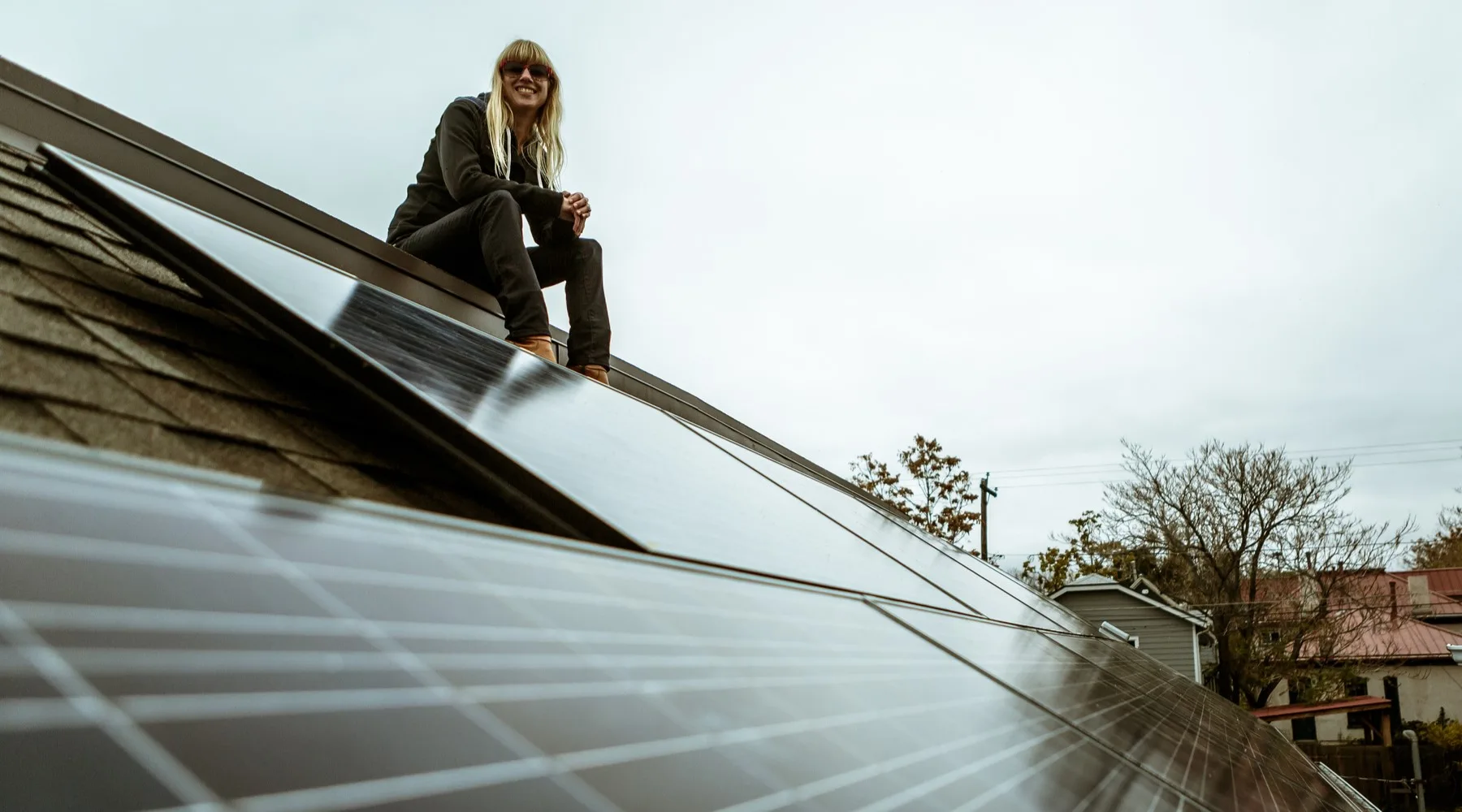4 tips to design your home for long-term, sustainable living

Looking to reduce your environmental impact? Check out our guide on making your place more sustainable, whether you're starting from scratch or doing a reno.
 Sponsored by Brighte. Get solar sooner with Brighte's 0% interest finance and network of over 2,100 trusted tradies. Borrow up to $30,000 and repay it with fortnightly instalments. Fees and lending criteria apply*
Sponsored by Brighte. Get solar sooner with Brighte's 0% interest finance and network of over 2,100 trusted tradies. Borrow up to $30,000 and repay it with fortnightly instalments. Fees and lending criteria apply*
Sustainable living has been heavily highlighted in the media over the last few years. So it's no surprise that many people are looking to overhaul their living space and make it more environmentally friendly and energy-efficient.
But whether you're looking to build your dream home – or just want to upgrade your current one – it can be tricky to know where to get started. So let's take a look at 4 key ways that you can design your home for sustainable living.
1. Work with specialists
The last couple of decades has seen a wider public interest in sustainable living emerge, with adjacent ideas gaining increasing prominence, acceptance and popularity. Accordingly, a range of industry professionals have emerged who specialise in working on sustainable housing projects.
So whether you're building from scratch or renovating, it makes sense to work with these experts. You can check their qualifications if you're unsure, too.
For example, the Master Builders Association of NSW offers Green Living Builder accreditation to professionals who undertake the relevant training with the organisation. The Green Building Council Australia is also able to certify buildings with a Green Star -- so you're able to check whether a builder has worked on one of these projects previously.
By working with the right team, you'll be able to create a home that's more aligned with your vision and more sustainable in the process too.
This can extend to your financing, too. When you're looking to secure finance for sustainable home improvements, working with a provider who understands sustainable practices can help streamline the process considerably.
For example, Brighte provides solar finance – but they also have a network of more than 2,100 accredited solar tradespeople across the country. So they can help you get connected with the right people for the installation, too.
2. Build with recycled and sustainable materials
One of the ways you can make your home more sustainable is to utilise recycled and repurposed materials. This saves all-new products from being manufactured, and can also give your new home a distinctive look in its own right.
Though wood and bricks are the obvious go-tos, there is a much broader spectrum of recycled materials available than you might realise. Recycled plastic has become an increasingly popular option, able to be used for everything from wooden-look flooring to outdoor tiles to wall insulation.
Your builder will be able to give you information about specifics for your home and the aesthetic you're aiming to achieve. But with the right materials, you'll have a home that not only looks good – it'll be good for the environment too.
3. Invest in energy-efficient appliances
Appliances are one of the major costs for any home – both for installation and ongoing energy costs. So it makes sense that you'd want to look for efficient options to make savings, right?
Well, there are a few common features that will suit just about any home. Let's take a look at a few.
- LED light bulbs – LED lighting is more energy-efficient and longer-lasting while still offering the lighting you need. They're cheaper to run, too. The Australian government's Energy Rating site notes that by replacing 10 halogen light bulbs with a more efficient LED alternative, you'd be looking to save approximately $650 over 10 years on your electricity bill.
- Energy-efficient air conditioning – While you're upgrading your home, it's probably time to upgrade your air conditioning too. Newer models can be far more energy-efficient, helping you save in the process. So why not take the chance to slice away at your energy bill?
- Underfloor heating – While underfloor heating may sound extravagant, modern versions of the technology are quite energy efficient and cost-effective. In turn, using them can be a great way to cut down on the usual heating bills. Just make sure that your home is also well-insulated, so that you can maximise the benefits.
Additionally, you may want to consider investing in a smart home system with centralised controls. By automating features of your home like lighting, heating, air conditioning and more, you'll be able to minimise energy waste in the process.
4. Installing solar panels
Of course, another way to offset electricity costs is via installing solar panels. Generally, they'll pay for themselves in energy savings in 3-6 years. Depending on how much electricity you generate, you may even be able to earn tariffs back for feeding energy back into the power grid, too. And if you're looking to reduce your reliance on the energy grid and use more solar energy to power your home, you may even opt to invest in solar battery storage, too.
Though there's some initial outlay required, many state governments offer rebates. Additionally, there are financing options that can help make the costs more manageable. For example, Brighte offers 0% interest payment plans to help make solar panels more affordable to Australians.
 Sponsored by Brighte. Get solar sooner with Brighte's 0% interest finance and network of over 2,100 trusted tradies. Borrow up to $30,000 and repay it with fortnightly instalments. Fees and lending criteria apply.*
Sponsored by Brighte. Get solar sooner with Brighte's 0% interest finance and network of over 2,100 trusted tradies. Borrow up to $30,000 and repay it with fortnightly instalments. Fees and lending criteria apply.*
